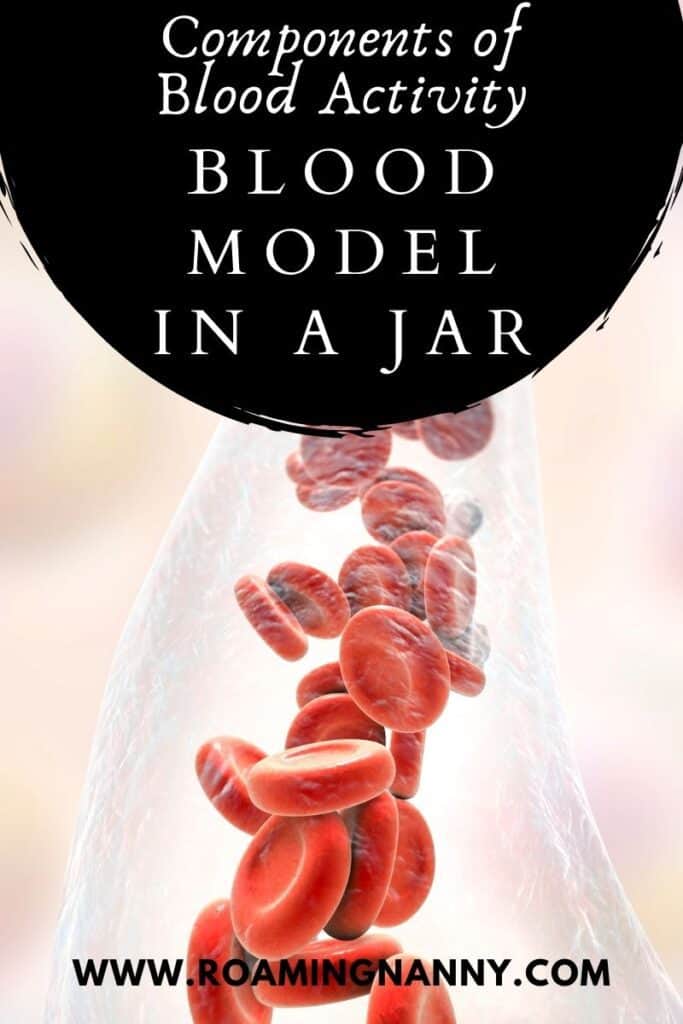I’m helping to home school one of my favorite kids and he is super into the human body. Because we’re taking his lead and turning his passions into lessons I created this fun components of blood activity and we made a blood model in a jar.
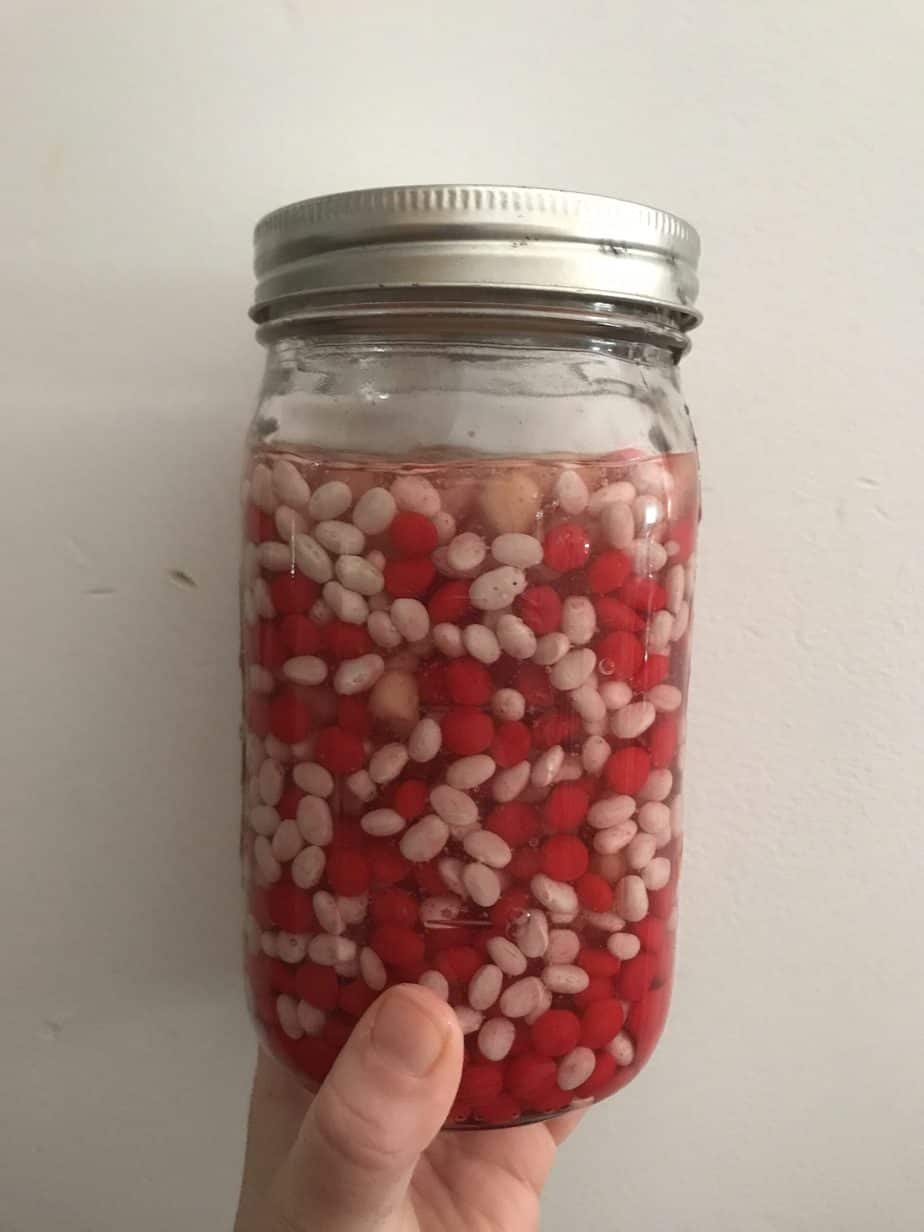
I hope this components of blood activity serves you well, and that you’ll check back soon. I’ll be adding more human body activities as we complete them!
Components of Blood Activity
What are the 4 Components of Blood?
There are 4 different components of blood: Red Blood Cells, Plasma, Platelets, and White Blood Cells. In this section, I’ll break down what each of those components are and provide a few videos to help explain it to the kids in your life.
Read More: Science Kits for Kids
Red Blood Cells
Red blood cells are the most common cell found in blood. They deliver oxygen through the bloodstream to the body, and carry carbon dioxide out of the body.
This is a great video about how the heart pumps blood around the body. The narrator is a little red blood cell and we learn what they do and how they move around the human body.
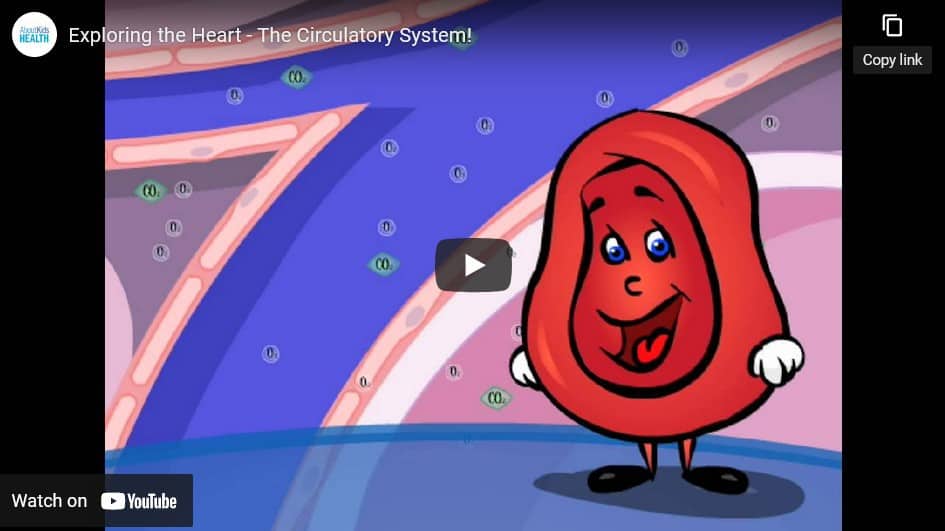
Plasma
Plasma is the yellow-ish liquid part of the blood and makes up about 55% of the blood. It carries the cells and proteins throughout the body.
White Blood Cells
White blood cells are part of the germ-fighting immune system. They floating around in the blood looking for invaders, like viruses and bacteria. When white blood cells find viruses and bacteria they fight them off.
This video goes in-depth on the different types of white blood cells and what they do, then dives into what the different blood types are, blood rain (not sure how this fits but kids will find it funny), and why blood is red. For children that are really into or want to learn more about human anatomy this is a great video as it gives plenty of information.
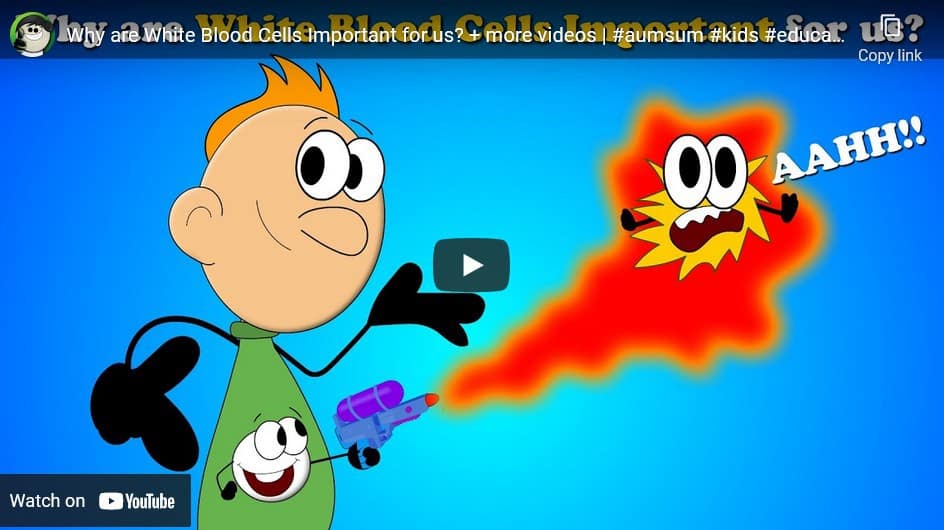
Platelets
Platelets are colorless cell fragments in the blood. When you get cut they form clots and stop or prevent bleeding.
Components of Blood: A Video
If you’re child or kid in your life is a visual learner, or you’re having a hard time wrapping your head around these concepts watch the video below. While the character explaining it is a bit weird (Is he a genie or drop of blood? I’m really nor sure.) It explains a great deal and includes plenty of technical terms for this components of blood activity.
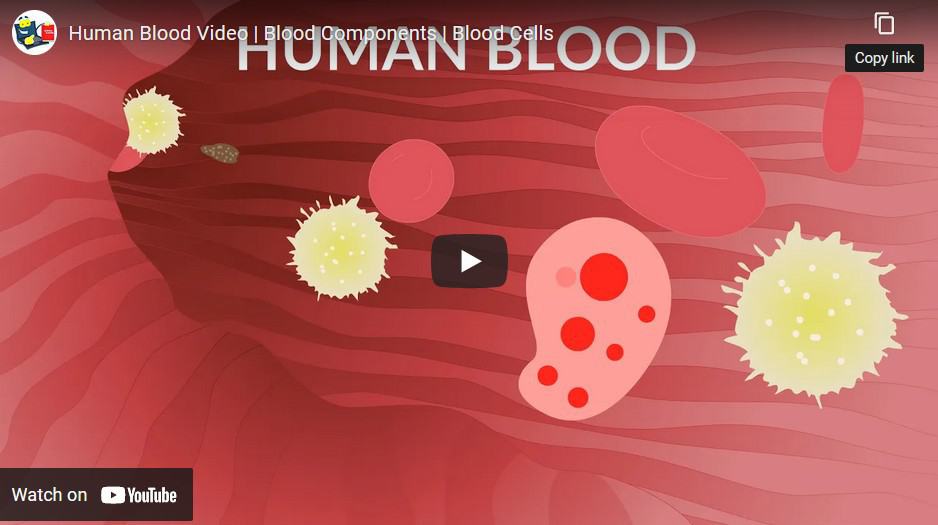
Pin it for later!
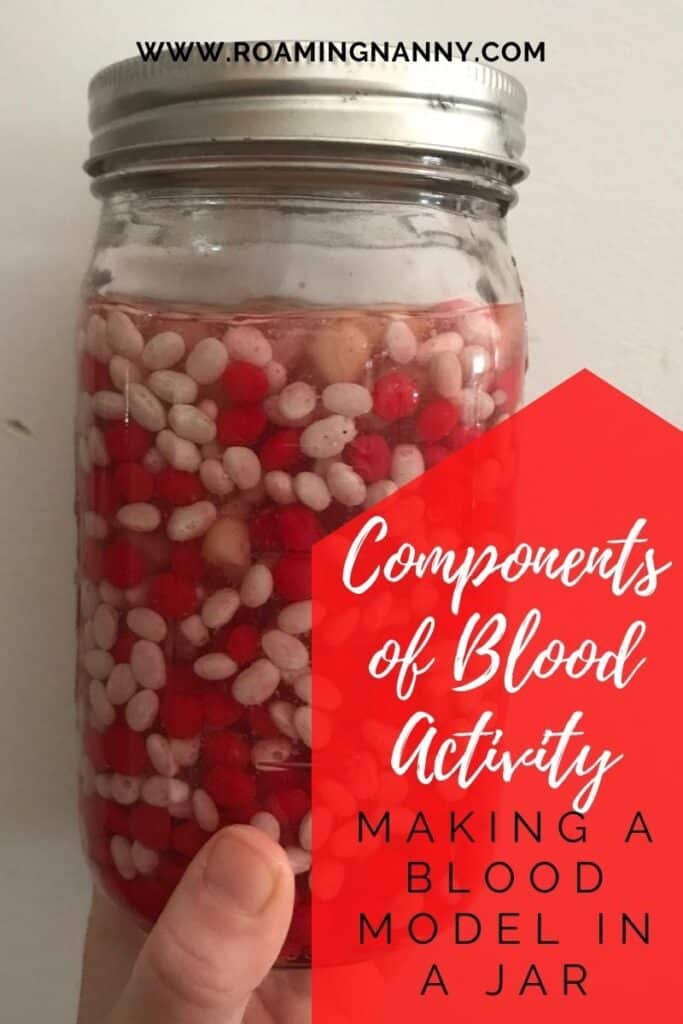
Read More: Make a Rube Goldberg Machine
Books about the Components of Blood
Here are a few books about blood and the human body. A Drop of Blood and Cell Wars focuses specifically on blood and have TONS of great information inside.
If you’re just diving into the human body I recommend My First Human Body Book. With plenty of pictures and easy to understand wording, it’s perfect for younger children.
I added the Smithsonian’s Human Body book because it has a great section about blood with lots of pictures. If you’re doing projects, homeschooling, or have a child that is interested in human anatomy you NEED this book in your life. My Nanny Kid is obsessed with human anatomy and we’re always grabbing this book to look up on thing or another.
How to Make a Blood Model
Supplies
To create your blood model you will need to following materials:
- Clear Corn syrup for the Plasma
- A medium sized bag of Red cinnamon candies for the Red Blood Cells
- A handfull of Dry lima beans and the White Blood Cells
- About a cup of Lentils or Navy Beans for the Platelets
- A 32 ounce Mason Jar and lid
- A large spoon
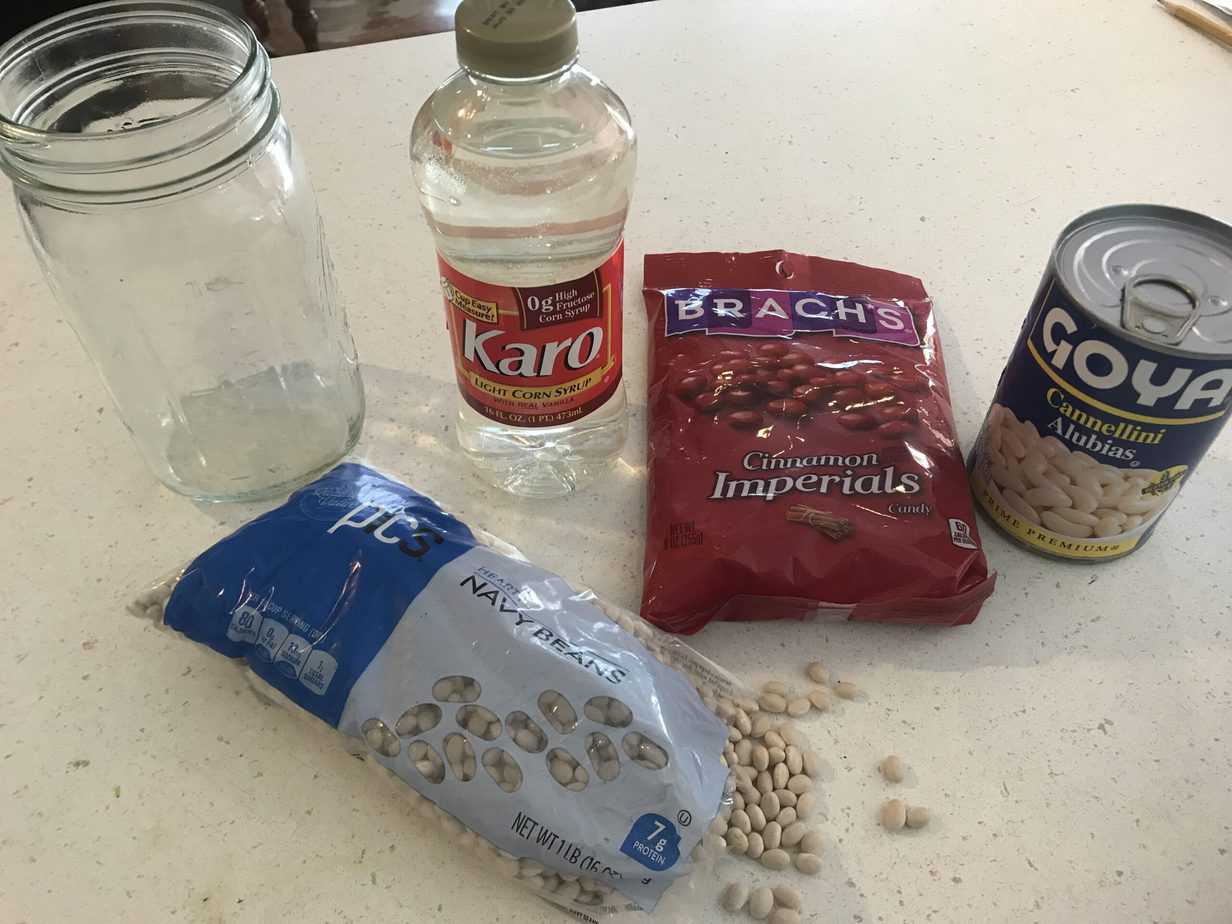
How to Make a Blood Model: Step 1
Pour the corn syrup into the mason jar. The corn syrup represents the plasma in the bloodstream. During each step, we talked about what each ingredient represented and what that component of blood does.
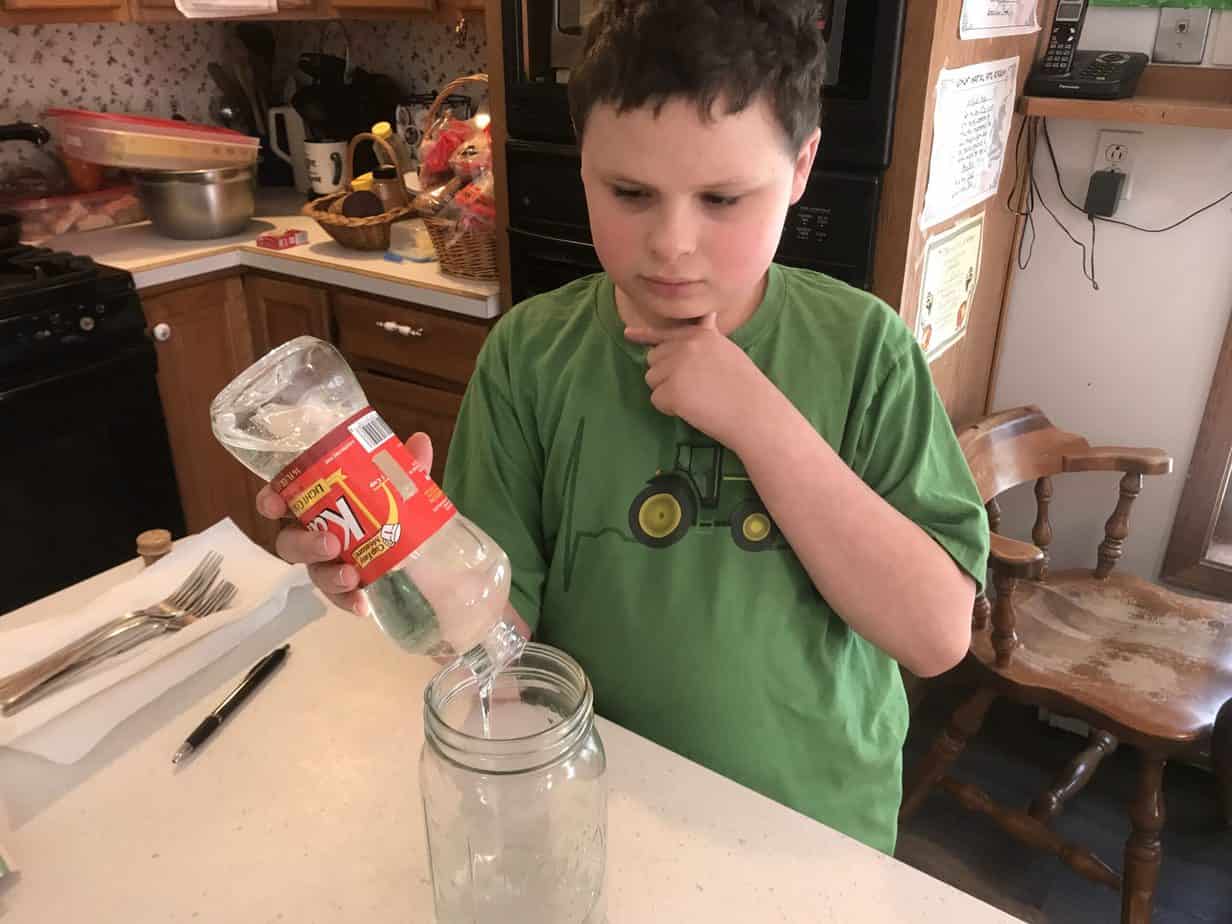
How to Make a Blood Model: Step 2
Next, add the red cinnamon candies to the jar to represent the red blood cells. Stir them into the corn syrup. This might be tricky for younger children as the corn syrup is thick. Encourage them to keep stirring.
How to Make a Blood Model: Step 3
Once the red blood cells are evenly distributed throughout the plasma add in the white blood cells and stir. These are represented by dry lima beans.
When I went to the grocery store I couldn’t find dry lima beans so I bought a can of white beans instead. This didn’t’ work out well because the beans are a little too small and because they’re already wet they tend to float back to the top of the jar.
How to Make a Blood Model: Step 4
Last, but not least add about a cup of lentils or navy beans and stir. Either one will work just fine. We had navy beans in the cabinet so I went with those, but I’ve also seen this done with lentils. The lentils/navy beans represent the platelets.
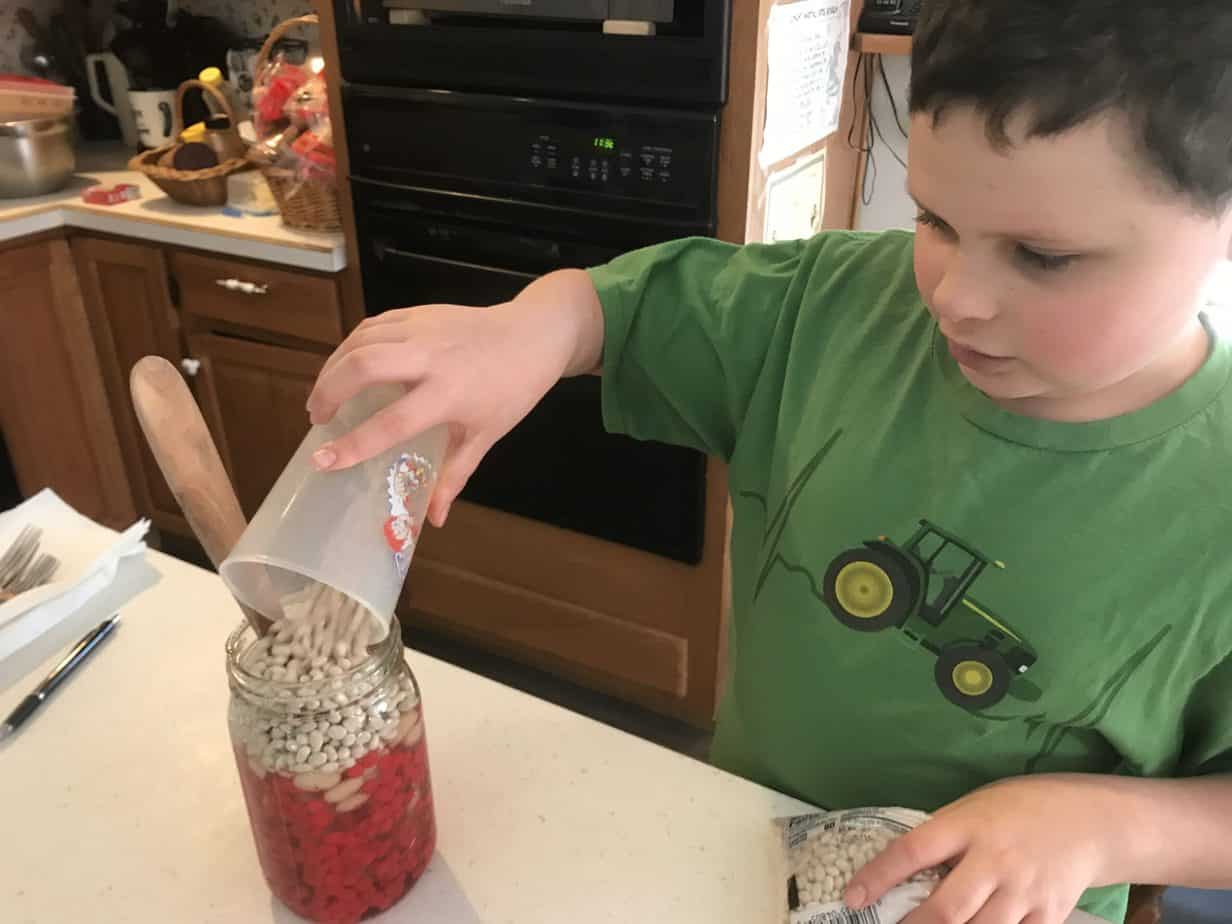
Once you’re done stirring, you’ve done it! That is what blood looks like up close. If you want an even better look grab a beginner microscope kit and this blood and guts prepared slide set and see for yourself.
Components of Blood Activity: More Resources
Outschool has some amazing online classes for all ages. Check out their selection of classes on blood and cells. Any of these will be a great addition to this components of blood activity.
Lesson Planet is an amazing resource for home schoolers and teachers to find over 400,000 lesson plans and activities. Here are a bunch of their resources about Blood.
Little Passports, while not blood and anatomy specific has some great Science Kits you get in the mail every month with a different theme. Noah and I love doing them together!
Did you like this components of blood activity and making the blood model in a jar? Let me know how it went in the comments!
Pin it for Later!
